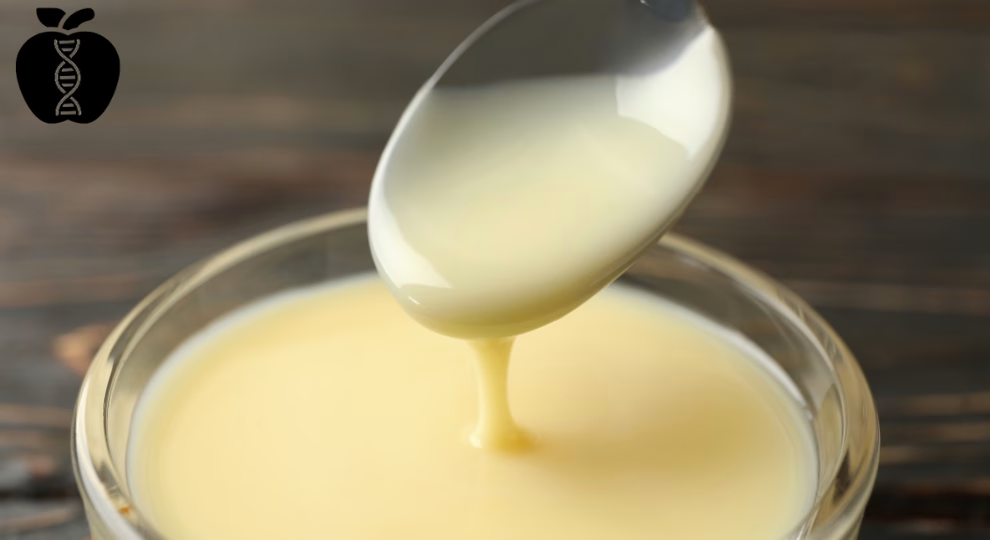Evaporated milk nutrition is a fascinating subject that blends culinary innovation with health benefits. In today’s post, we explore how this concentrated dairy product not only boosts your recipes with creaminess but also packs a nutritional punch—delivering essential vitamins, minerals, and calories in a smaller volume compared to fresh milk. Our clear thesis is that understanding evaporated milk’s nutritional profile can help you make healthier cooking choices while enjoying its unique flavor and convenience.
1. Nutritional Profile of Evaporated Milk
Evaporated milk is produced by removing about 60% of the water from fresh milk, resulting in a product that contains nearly twice the milk solids (Wikipedia). For example, one cup of whole evaporated milk can provide roughly 338 calories, along with 17 grams of protein, and significant amounts of calcium and vitamin D. When compared to fresh milk, evaporated milk not only offers a denser nutrient profile but also a unique, slightly caramelized flavor due to the heat process used in its production.
Evaporated milk and fresh whole milk are both derived from cow’s milk but differ significantly in their nutritional profiles due to the evaporation process used to produce evaporated milk. This process removes about 60% of the water content, resulting in a more concentrated product. Below is a comparison of their nutritional values per 100 grams:
| Nutrient | Evaporated Milk | Fresh Whole Milk |
|---|---|---|
| Calories | 134 kcal | 60 kcal |
| Protein | 6.8 g | 3.2 g |
| Total Fat | 7.6 g | 3.2 g |
| Carbohydrates | 10 g | 4.8 g |
| Calcium | 252 mg | 113 mg |
| Vitamin D | 2.5 µg | 1 µg |
Key Differences:
Caloric Content: Evaporated milk contains more than double the calories of fresh whole milk, primarily due to its concentrated nature.
Macronutrients: The protein, fat, and carbohydrate contents in evaporated milk are approximately double those found in fresh whole milk.
Minerals and Vitamins: Evaporated milk offers higher amounts of calcium and vitamin D per 100 grams compared to fresh whole milk, making it a richer source of these nutrients.
It’s important to note that while evaporated milk provides a denser nutrient profile, it also has a higher lactose content due to its concentration. Individuals with lactose intolerance or cow’s milk allergies should exercise caution when consuming evaporated milk. Additionally, evaporated milk has a slightly caramelized flavor and a thicker consistency, which may affect its suitability in certain recipes.
For those monitoring calorie and fat intake, fresh whole milk might be the preferred choice. However, if a recipe requires a creamier texture and a richer nutrient profile, evaporated milk could be more appropriate. Always consider the specific dietary needs and preferences when choosing between these two dairy products.
2. Health Benefits and Supporting Data
The health benefits of evaporated milk are multifaceted. Its concentrated nutrient composition makes it an excellent source of calcium and vitamin D—vital for bone health and immune function. Studies show that incorporating evaporated milk into a balanced diet can help meet daily nutritional requirements without significantly increasing volume or cost.
For instance, data indicates that the calorie density of evaporated milk makes it ideal for individuals who need nutrient-dense options without excessive fluid intake. In addition, the fortification of vitamins (often including vitamin D) improves the bioavailability of calcium, thus supporting overall bone strength and metabolic function.

3. Addressing Common Questions and Concerns
Readers often wonder, “Is evaporated milk nutritious enough compared to fresh milk?” and “How do I best incorporate it into my diet?” Here are some answers:
- Digestibility: Due to the homogenization process, evaporated milk is easier to digest and can be ideal for cooking, especially in recipes where a creamy texture is desired.
- Shelf Life: Unopened cans of evaporated milk can last up to 15 months without refrigeration, making it a practical pantry staple.
- Usage in Recipes: Many chefs substitute evaporated milk in baked goods and sauces to enhance creaminess while keeping the fat content lower than heavy cream.
- Comparisons: While some may be concerned about its higher calorie density, remember that when reconstituted, evaporated milk closely mimics fresh milk’s nutritional profile—sometimes even outperforming it in essential vitamins and minerals.
4. Culinary Uses and Substitution Tips
Although optional, this section adds extra value for culinary enthusiasts:
- Culinary Applications: Use evaporated milk in custards, soups, and sauces to achieve a rich texture without the high fat content of cream.
- Substitution Tips: To replicate fresh milk, mix one part evaporated milk with 1 1/4 parts water. This reconstitution makes it an economical substitute in everyday recipes.
- Creative Recipes: Experiment with evaporated milk in desserts like tres leches cake or in savory dishes such as creamy mashed potatoes.

Conclusion
In summary, evaporated milk nutrition offers both exceptional taste and significant health benefits. Its concentrated form means you gain more nutrients per serving, making it an excellent choice for both everyday cooking and special recipes. Whether you are looking to boost your calcium and vitamin D intake or simply enjoy a richer flavor in your dishes, evaporated milk stands out as a practical, nutritious option. Ready to experiment? Try incorporating evaporated milk into your next recipe and experience the creamy difference!
